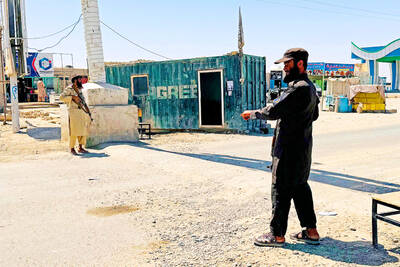The WHO concluded that human-to-human transmission likely occurred among seven relatives who died from bird flu on Indonesia's Sumatra Island, while an animal health expert said the disease was more widespread in poultry than previously thought.
In a recently leaked WHO report, experts said the cluster's first case was probably infected by sick birds and spread the disease to six family members living in a remote village. One of those cases, a boy, then likely infected his father, it said.
The UN agency stressed the virus had not mutated in any major way and that no cases were detected beyond members of the family, who died last month.
"Six confirmed H5N1 cases likely acquired [the] H5N1 virus through human-to-human transmission from the index case ... during close prolonged contact with her during the late stages of her illness," the report said.
The report was distributed at a closed meeting in Jakarta attended by some of the world's top bird flu experts. The three-day session that wrapped up yesterday, was convened after Indonesia asked for international help.
The country has recorded the world's highest number of human bird flu cases this year, and 39 of those infected have died.
More outbreaks also are occurring in poultry than earlier thought, said Jeff Mariner, an animal health expert from Tufts University working with the UN Food and Agriculture Organization in Jakarta.
He is coordinating a pilot project that involves local surveillance teams conducting field interviews to track backyard poultry that have rapidly died. The teams then use bird flu test kits to identify outbreaks.
In the 12 pilot districts on Java Island, 78 poultry outbreaks were detected from January to May. Birds discovered in those outbreaks were slaughtered to limit the spread of infection.
"We thought there was dramatic underreporting, but we never imagined that it would be so pervasive," Mariner said on the sidelines of the meeting. "These numbers of outbreaks only represent, say, a third of the coverage in the district."
The experts were expected to discuss Sumatra's large family cluster during the session. One of the remaining mysteries is why only blood relatives -- not spouses -- became infected.
The WHO report hypothesizes that the family shared a "common genetic predisposition to infection with H5N1 virus with severe and fatal outcomes." However, there is no evidence to support that.
Keiji Fukuda, WHO's coordinator for the Global Influenza Program in Geneva, said the Indonesian case appears to resemble other family clusters where limited human-to-human transmission occurred following close contact. He said scientists must find out whether anything is different about the way the virus is behaving.
"The really critical factor is why did that cluster develop?" he said. "What's the reason why people in a cluster got infected?"
Bird flu has killed at least 130 people worldwide since it began ravaging Asian poultry stocks in late 2003. Experts fear the virus will mutate into a form that spreads easily among people, potentially sparking a pandemic.
So far, the H5N1 virus remains hard for people to catch, and most human cases have been traced to contact with infected poultry or wild birds.
Indonesian officials said the country lacks manpower and money to battle the H5N1 virus alone.
The government has been saddled with a series of natural disasters, including the 2004 tsunami and an earthquake last month on Java Island.

‘EYE FOR AN EYE’: Two of the men were shot by a male relative of the victims, whose families turned down the opportunity to offer them amnesty, the Supreme Court said Four men were yesterday publicly executed in Afghanistan, the Supreme Court said, the highest number of executions to be carried out in one day since the Taliban’s return to power. The executions in three separate provinces brought to 10 the number of men publicly put to death since 2021, according to an Agence France-Presse tally. Public executions were common during the Taliban’s first rule from 1996 to 2001, with most of them carried out publicly in sports stadiums. Two men were shot around six or seven times by a male relative of the victims in front of spectators in Qala-i-Naw, the center

Canadian Prime Minister Mark Carney is leaning into his banking background as his country fights a trade war with the US, but his financial ties have also made him a target for conspiracy theories. Incorporating tropes familiar to followers of the far-right QAnon movement, conspiratorial social media posts about the Liberal leader have surged ahead of the country’s April 28 election. Posts range from false claims he recited a “satanic chant” at a campaign event to artificial intelligence (AI)-generated images of him in a pool with convicted sex offender Jeffrey Epstein. “He’s the ideal person to be targeted here, for sure, due to

Australia’s opposition party yesterday withdrew election promises to prevent public servants from working from home and to slash more than one in five federal public-sector jobs. Opposition leader Peter Dutton announced his conservative Liberal Party had dropped its pledge that public servants would be required to work in their offices five days a week except in exceptional circumstances. “I think we made a mistake in relation to this policy,” Dutton told Nine Network television. “I think it’s important that we say that and recognize it, and our intention was to make sure that where taxpayers are working hard and their money is

DISPUTE: Beijing seeks global support against Trump’s tariffs, but many governments remain hesitant to align, including India, ASEAN countries and Australia China is reaching out to other nations as the US layers on more tariffs, in what appears to be an attempt by Beijing to form a united front to compel Washington to retreat. Days into the effort, it is meeting only partial success from countries unwilling to ally with the main target of US President Donald Trump’s trade war. Facing the cratering of global markets, Trump on Wednesday backed off his tariffs on most nations for 90 days, saying countries were lining up to negotiate more favorable conditions. China has refused to seek talks, saying the US was insincere and that it